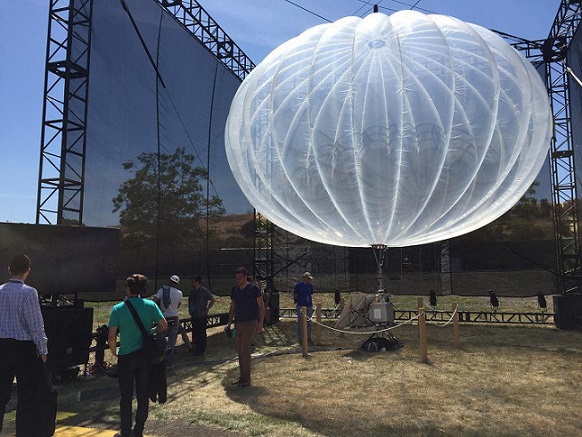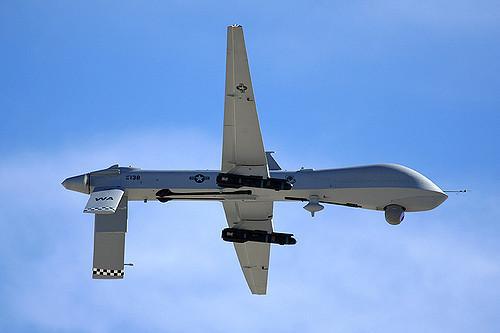Dealing With the Aftermath of Natural Disasters
With the occurrence of natural disasters on the rise across the globe and becoming more severe each year thanks to man-made climate change, it’s never been more crucial for governments and the private sector alike to take proactive steps in preparing for and reacting to disaster. Crippling crucial infrastructure and trapping survivors in debris, sudden onset disasters often mean that just a few hours may lie between life and death for many of its victims. Sadly, it is often the poorest communities who suffer most in the aftermath of a hurricane, flood, mud slide, wild fire or earthquake – but there are some initiatives and technologies looking to address this.
Project Loon – helium balloons to provide internet access in stricken areas

In the wake of disaster, internet access can allow survivors to reach out for help, coordinate with local repair teams, and simply let their loved ones know they’re safe. A month after Hurricane Maria devastated Puerto Rico in October of 2017, more than half of the island remained without electricity, and therefore cut off from the internet. In partnership with cell phone carriers AT&T and T-Mobile, Google’s parent company Alphabet launched Project Loon and managed to get 100,000 people connected. Even more impressively, they applied for and received approval from the FCC and launched the helium balloons all on the same day.
Renewable energy that bypasses a devastated grid

Car company Tesla stepped in to assist Puerto Rico too, first donating solar panels and batteries to power a children’s hospital in San Juan, and later rolling the aid out to another six projects including an elderly care center and another hospital – and proving that solar power can be an effective and extremely useful disaster response strategy. Their projects in Puerto Rico have been so successful in fact, that lawmakers are considering a bill to transition the island to 100% renewable energy.
Getting emergency infrastructure in place for humanitarian aid with geocells
One of the biggest and most immediate challenges after an earthquake, flood or hurricane is getting help onto the ground when airfields, ports and roads have been badly damaged. Even when search and rescue and emergency aid deliveries arrive almost immediately, getting supplies and emergency personnel to where they’re needed most can present an enormous challenge, putting more lives at risk. To get basic land, air and sea infrastructure in place to allow for the delivery of fuel, supplies and humanitarian aid, geocells can be incredibly useful. Designed by PRS Geocell Technologies, these light honeycomb structures are delivered folded, and can be filled in with virtually any local soil to create unpaved roads, platforms and runways within days using local labor.

They can be used to quickly reinforce unstable slopes, build flood retention walls for damaged reservoirs and dams, supply roads for heavy relief vehicles, create heavy duty working platforms for ports and staging areas, and provide rapid ground reinforcement for emergency strips and runways – enabling emergency response crews and aid to get to where they’re needed most.
Hurricane Prep Supplies by Direct Relief
When hurricanes strike, it often becomes impossible for trapped or wounded survivors to reach medical centers. Non-profit organization Direct Relief enables emergency crews and designated healthcare centers to carry emergency supplies with them. Developed in the aftermath of Hurricane Katrina, their Hurricane Prep Packs include vital first aid supplies, antibiotics and medications, as well as a backpack-sized version for responders on the ground with supplies to address infection control, run diagnostics and provide trauma care.
Drones and UAVs

Able to check on whether people have evacuated their homes, monitor water levels, assess the extent of damage and assist in planning and allocation of aid, drones and UAVs (Unmanned Aerial Vehicles) can get where people and other vehicles can’t, and provide invaluable insight. They were especially useful after Hurricane Harvey in 2017, when CRASAR used a fleet of 119 drones to plan federal disaster relief and gather data for future response planning.
They have a dark side too, though. Because anyone can buy their own UAV, they can also get in the way of organized relief efforts when everyday people, usually with very good intentions, attempt to get a better visual of the scene. This has been the case with several of the Californian wildfires, where civilian drone operators actually hindered firefighters. Because UAVs and firefighting aircraft both travel just a few hundred meters off the ground, there’s risk of collision and crashes that could endanger residents and firefighters alike, sometimes meaning that firefighting flights have to be grounded.
Looking forward
Unfortunately, there’s little doubt that we can only expect hydro-meteorological disasters to become more frequent and severe. But when the private sector, government and individuals work together, we can also become much better prepared, and ultimately save lives.
